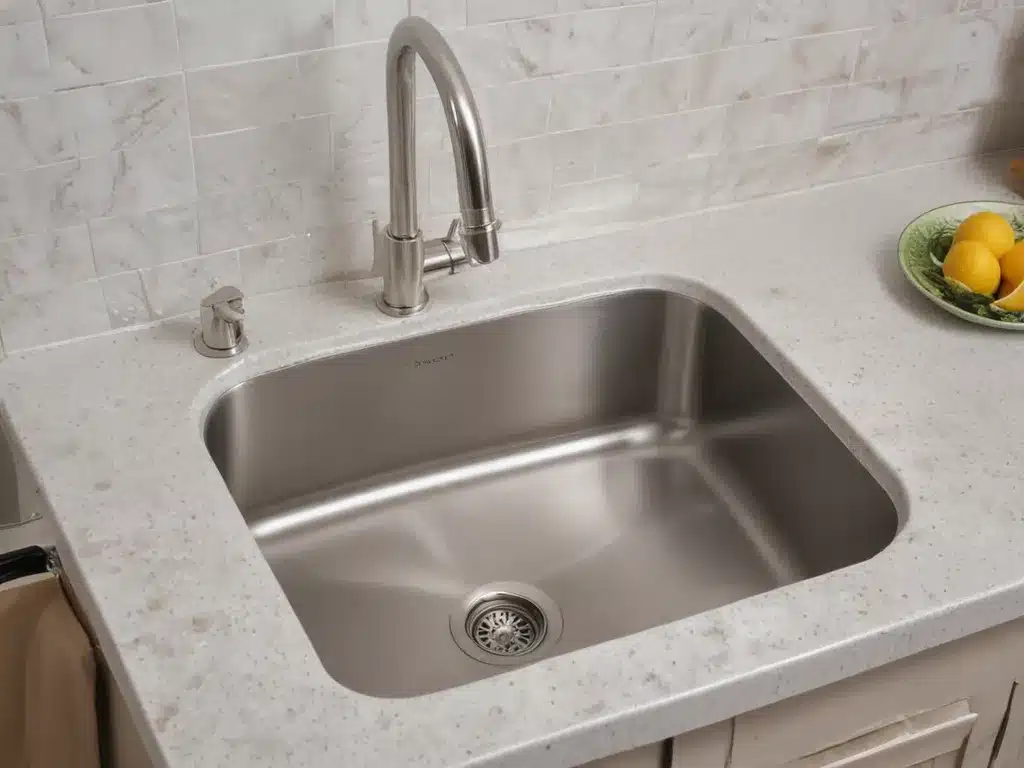Stainless steel sinks are a popular choice for many homes due to their sleek look, durability, and easy cleaning. However, even the best stainless steel sinks can start to look dull and dirty over time. The good news is that with a little bit of effort, you can make your stainless steel sink look brand new again. Here are my tips for making stainless steel sinks shine bright like new.
Why Stainless Steel Sinks Lose Their Shine
Stainless steel sinks are prone to a buildup of grime, soap scum, hard water stains, rust stains, food stains, and oils. This buildup causes the sink to look cloudy and dirty. There are a few reasons this gunk accumulates on stainless steel:
-
Hard water – Mineral deposits in hard water leave behind white chalky mineral spots on the surface of stainless steel. These water stains make the sink appear dull and dirty.
-
Soap scum – Most liquid and bar soaps leave behind a film on the surface of the sink. This soap scum attracts dirt and minerals.
-
Oils and grease – Cooking oils and grease build up on the sink surface over time. These oils attract dirt and other debris.
-
Rust – If the stainless steel is compromised, rust can form. Rust stains are unsightly and difficult to remove.
-
Food stains – Things like coffee, tea, juice and other foods can stain the sink if left to sit.
Cleaning Solutions for Restoring Shine
The key to making a stainless steel sink shine again is using the right cleaning solutions. Here are some effective options:
Baking Soda
Baking soda is mildly abrasive so it will remove grime and restore shine. Make a paste with water and scrub onto the sink with a sponge or cloth. Rinse thoroughly.
Vinegar
Distilled white vinegar cuts through soap scum, hard water deposits, and dullness. Pour undiluted vinegar directly onto sink and let sit for 5-10 minutes before scrubbing and rinsing.
Dish Soap
For routine cleaning, dish soap combined with baking soda or vinegar removes grease and daily grime. Use a soft sponge or cloth to gently scrub.
Commercial Cleaners
Look for stainless steel cleaners and polishes made specifically for sinks. Apply these cleaners to a damp sponge or cloth and scrub onto the sink. Most will require rinsing.
Bleach
For tough stains, a bleach cleaner can help dissolve and remove rust and extreme discoloration. Check the sink first for damage since bleach can further compromise the steel.
Boiling Water
For hard water marks, pour boiling water directly onto the stains. This can help loosen mineral deposits. Follow up by scrubbing.
Steps for Cleaning and Polishing
Follow these steps to thoroughly clean and shine up your stainless steel sink:
-
Remove everything from the sink and clear countertops. This gives you room to work.
-
Rinse with hot water to remove loose debris.
-
Apply your chosen cleaning solution (baking soda, vinegar, etc) to the entire surface of the sink.
-
Let the cleaner sit for 5-10 minutes if possible. This gives it time to break down buildup.
-
Scrub the entire sink basin, sides, and fixtures using a sponge, cloth, or brush. Apply light to medium pressure.
-
Use a soft brush or toothbrush to scrub around the faucet and any corners. These areas collect gunk.
-
Rinse thoroughly with hot water to remove all cleaning solution residue.
-
Dry the sink completely using a towel. Spot check for any remaining dirt or stains. Repeat cleaning if needed.
-
Apply stainless steel polish or protectant once the sink is fully dry and clean. These sealants provide extra shine and prevent future fingerprints.
-
Buff dry with a microfiber cloth.
Your sink should now look bright, shiny, and like new again! Be sure to clean your sink regularly to prevent future buildup.







